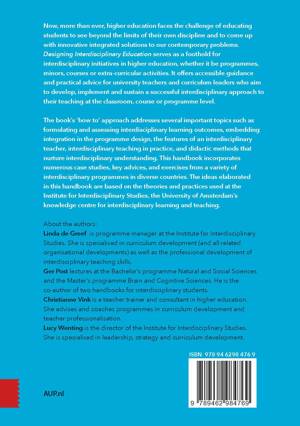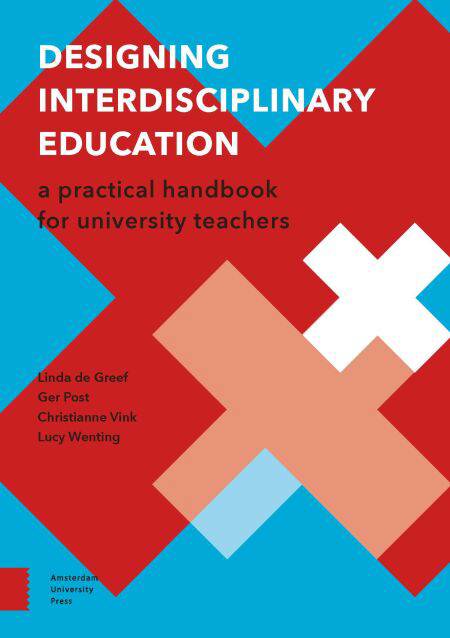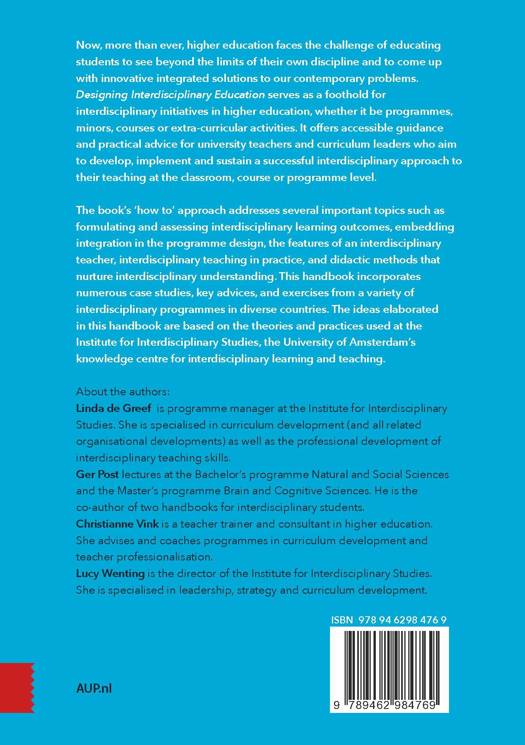
- Afhalen na 1 uur in een winkel met voorraad
- Gratis thuislevering in België vanaf € 30
- Ruim aanbod met 7 miljoen producten
- Afhalen na 1 uur in een winkel met voorraad
- Gratis thuislevering in België vanaf € 30
- Ruim aanbod met 7 miljoen producten
Zoeken


Designing Interdisciplinary Education E-BOOK
A Practical Handbook for University Teachers
Linda de Greef, Ger Post, Christianne Vink, Lucy Wenting
€ 14,99
+ 14 punten
Omschrijving
Interdisciplinary education has been identified by many educational organisations in Europe and the United States as important for what lies ahead, and it has become a buzzword in some debates about educating for the future. Now, more than ever, higher education is challenged to educate students to see beyond the limits of their own discipline and to come up with innovative integrated solutions for our global challenges. But how do you define interdisciplinarity? How do you measure whether a student has integrated different insights? How do you challenge students to step across disciplinary borders?
'Designing interdisciplinary education' offers guidance and practical advice for university teachers who want to successfully develop, implement and sustain an interdisciplinary approach to their teaching.
'Designing interdisciplinary education' offers guidance and practical advice for university teachers who want to successfully develop, implement and sustain an interdisciplinary approach to their teaching.
Specificaties
Betrokkenen
- Auteur(s):
- Uitgeverij:
Inhoud
- Aantal bladzijden:
- 144
- Taal:
- Engels
- Reeks:
Eigenschappen
- Productcode (EAN):
- 9789048571246
- Verschijningsdatum:
- 16/01/2025
- Uitvoering:
- E-book
- Formaat:
- ePub

Alleen bij Standaard Boekhandel
+ 14 punten op je klantenkaart van Standaard Boekhandel
Beoordelingen
We publiceren alleen reviews die voldoen aan de voorwaarden voor reviews. Bekijk onze voorwaarden voor reviews.












